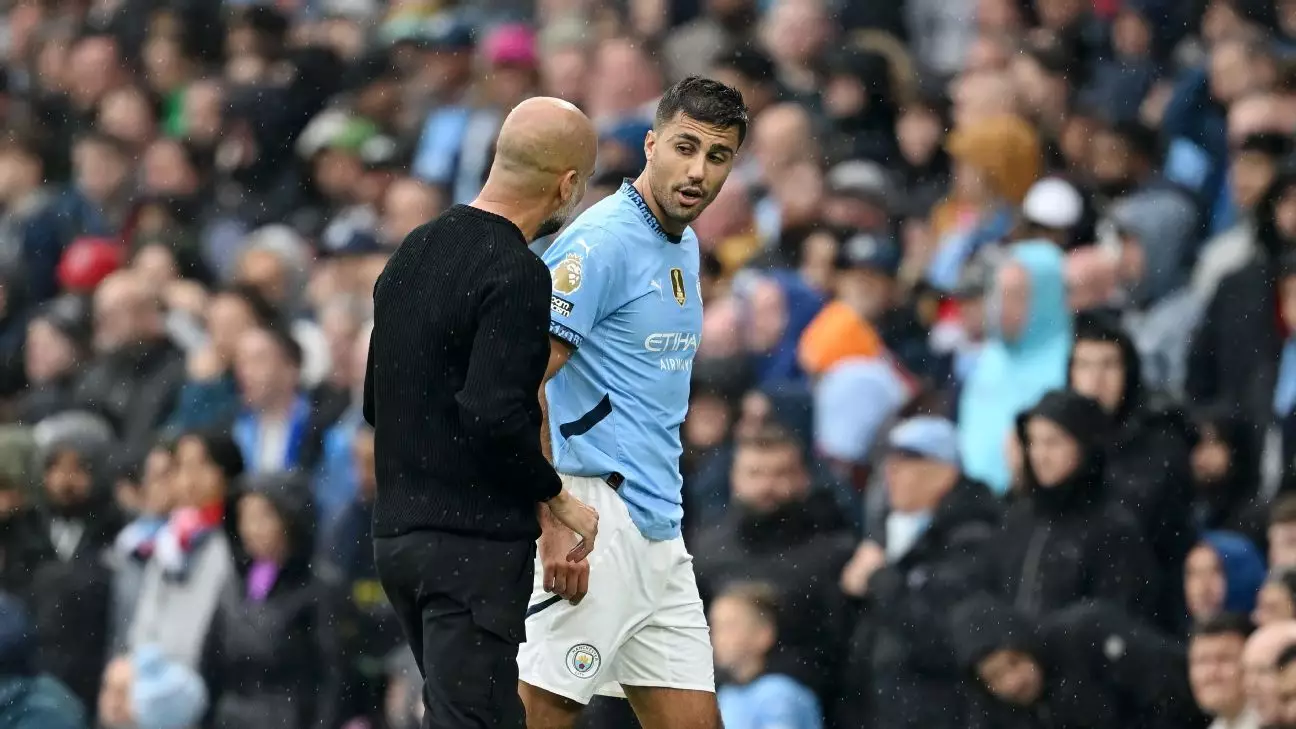As the world becomes increasingly aware of the health and safety implications faced by professional football players, a recent report from Katholieke Universiteit Leuven (KU Leuven) has shed light on alarming shortcomings in the sport’s governance. Commissioned by FIFPRO, the global players’ union, this report has underscored the urgent need for football’s governing bodies to reevaluate their commitment to player welfare amidst an ever-expanding schedule of competitions.
The report reveals that professional football’s organizational structure has grown increasingly negligent regarding essential safety protocols. The backdrop of this failure largely stems from the relentless demands imposed on players, often overlooking them as fundamental workers deserving of protection under labor laws. Frank Hendrickx, the director of the Institute for Labour Law at KU Leuven, has emphasized that recognizing professional football players as workers is vital. Disturbingly, without adequate application of national and international labor standards, players are left vulnerable to exploitation.
The criticism levied against FIFA and its affiliates primarily revolves around the expanding international calendar, with particular attention drawn to the newly formatted FIFA Club World Cup. Critics argue that this intensified schedule does not account for the existing travel fatigue, late-night games, and the mental toll that players endure. When competition schedules are drawn without considering these significant factors, both physical and mental health of players may falter, leading to an increased risk of injury and burnout.
As documented in the report, the implications of these practices extend beyond mere inconveniences; they breach established Occupational Safety and Health (OSH) standards prescribed by European and international legal frameworks. These regulations exist to safeguard workers in high-risk occupations, which undoubtedly applies to elite athletes subjected to intensive physical and psychological demands. The legal complaint filed on October 14 against FIFA articulates these violations, positioning the organization’s decisions as monopolistic and detrimental to players’ welfare.
Alfonso Lamadrid, a prominent lawyer specializing in EU competition law, highlighted the paradox: FIFA’s directives seem to actively hinder compliance with health and safety principles. This undermines collective bargaining agreements, compromising the established rights of players. Such a reality unveils a pattern of negligence that begs for scrutiny and reformation within football’s upper echelons.
The findings from this research further reveal a growing concern about the fatigue — both mental and physical — that players face in today’s demanding football landscape. Lode Godderis, an expert in occupational health and safety, supports this assertion, noting an unusually high incidence rate of injuries within the sport. The crux of the issue lies not solely in the number of matches played but also in the variety of training regimens and match loads that amplify the stress placed on players’ bodies and minds.
As FIFPRO’s Alexander Bielefeld points out, the players’ dissatisfaction is palpable; there exists a collective decision among athletes to demand change regarding their increasingly taxing schedules. The realization that many are nearing the peak years of their careers, coupled with a new Champions League format and an escalating variety of competitions, contributes to their justified discontent.
Fortunately, the KU Leuven report does more than highlight issues; it also provides a foundation for potential solutions. The applicability of OSH standards opens doors for advocacy and reforms that could reshape the professional football landscape. The players’ voices, now unified in their call for healthier working conditions, should resonate in boardrooms where decisions affecting their lives and careers are made.
The forthcoming actions, including legal pursuits from various national players’ associations, indicate a pivotal moment for the sport. These efforts could potentially lead to substantive changes that reprioritize player welfare and establish a framework where competitive success does not come at the cost of an athlete’s health.
The comprehensive assessment of safety standards in professional football reveals a stark reality: the sport’s future must not only focus on competition and profitability but also on fostering a sustainable environment for its most vital asset — the players. With mounting pressure from stakeholders demanding accountability and reform, football must rise to the occasion and put player well-being at the forefront of its operational ethos.

